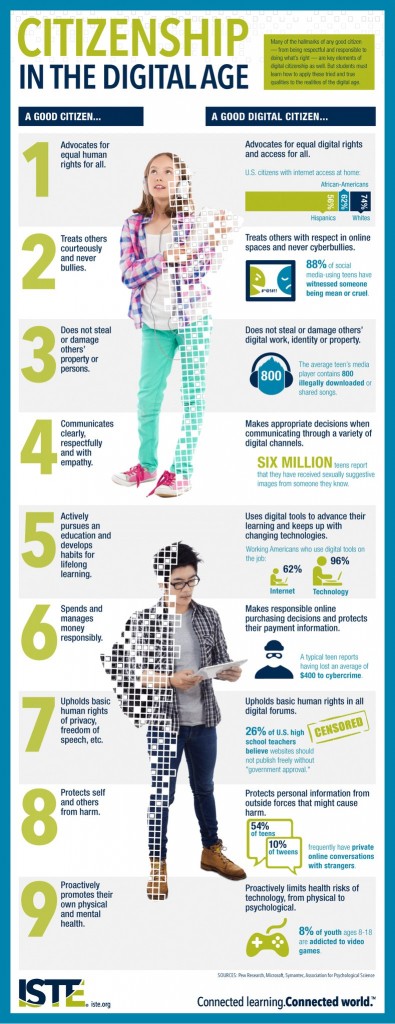Digital Citizenship
February 24, 2016 - 2 minutes readThe notion of Digital Citizenship is not new (about 12 million results in a quick Google search); it can be generally described as the norms associated with the safe and appropriate use of technology. Parents often ask what schools are doing to “teach” this concept, and I have not always been able to provide a response that is educationally tangible.
Certainly there are elements and learning outcomes in a variety of current curriculums (Health and Career 8/9 for example) that address aspects of “Digital Citizenship,” but we do not necessarily “teach” it as a stand-alone concept per se. Moreover, teachers will take advantage of both “teachable moments” in the classroom, as well as instructing students regarding the citation of references in written work, and the importance of submitting authentic work. One reflection on this that I read a while ago included the observation that digital citizenship is truly the same as citizenship, just with a digital focus, and so why would we differentiate?
Regardless, the topic of Digital Citizenship interests me, and I always keep an eye out for resources that are both age appropriate for a high school setting, and written in a way that teenagers will engage. To date, many if not most, of the examples I have seen have been targeted at younger children, as evident in the language and graphics depicted.
I came across a post on the International Society for Technology in Education (ISTE) website entitled Infographic: Citizenship in the digital age. It caught my attention;specifically, the students depicted in the infographic could reasonably be in grade 8. Additionally, the language level of the 9 Good Citizen points were written both in a way, and at a level, that I felt would appeal to high school students. What stood out immediately for me was the title. It suggested the same idea that I referenced above regarding the distinction between citizenship and digital citizenship.

Recent Comments